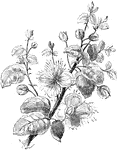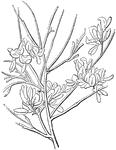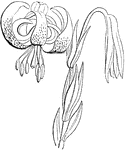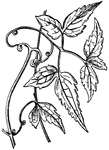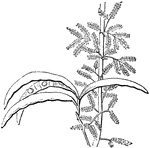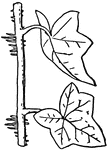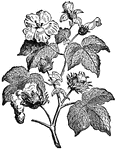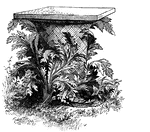
Terminal Herbaceous Grafting
Grafting is a horticultural operation which consists in placing together the two cut surfaces of different…
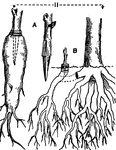
Root Grafting
Grafting is a horticultural operation which consists in placing together the two cut surfaces of different…

Grass of Parnassus
A grass of Parnassus is any member of the genus Parnassia, of the Saxifrage family, growing in damp…

Ground Ivy
Ground Ivy (Glecoma hederacea) is a common European labiate hedgerow plant, with trailing stems, kidney-shaped,…
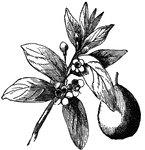
Guava
Guava (Psidium guayava) is a low-growing West Indian tree belonging to the family Myrtaceæ. It bears…

Guelder Rose
Also known as the Snowball Tree, the Guelder Rose is a cultivated form of the genus Viburnum, especially…

Juncus Acutiflorus
Juncus acutiflorus belongs to a genus of grass-like herbs (Juncus) that grow in boggy places.

Juncus Squamosus
Juncus squamosus belongs to a genus of grass-like herbs (Juncus) that grow in boggy places.

Juncus Glaucus
Juncus glaucus belongs to a genus of grass-like herbs (Juncus) that grow in boggy places.
Juncus Conglomeratus
Juncus conglomeratus, also known as the common rush, belongs to a genus of grass-like herbs (Juncus)…

Juncus Compressus
Juncus compressus belongs to a genus of grass-like herbs (Juncus) that grow in boggy places.

Juncus Effusus
Known as the soft rush, Juncus effusus is nearly as common as the most common species, J. conglomeratus.…

Softening Process in the Manufacturing of Jute
In the manufacturing of jute, the jute fiber must first be softened. The softening machine consists…

Carding Process in the Manufacuring of Jute
After the softening process in the manufacturing of jute, the fibers are about six feet long, and are…

Spinning Process in the Manufacturing of Jute
In the last step of the manufacturing process of the jute plant, the material is taken on bobbins to…

Jute
Jute, also known as Calcutta Hemp, is a fiber obtained from several species of the genus Corchorus of…
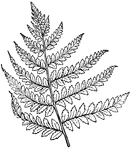
Lady Fern
The lady fern in the popular name of the fern 'Asplenium filix-foemina'. It is variable in size and…

Laminaria Saccharina
Laminaria saccharina belongs to the group Laminariæ, a group of algæ belonging to the Phæosporeæ,…

Lamium Album
Lamium album (also known as the white dead-nettle, or archangel) is a member of the Lamium, a genus…
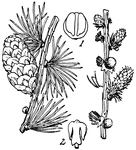
Larch, Cone and Flowers (male and female)
Larch, or Larix, is a genus of hardy, deciduous, coniferous trees of very graceful habit. They bear…
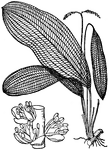
Lattice Leaf
Lattice Leaf is the popular name of a water plant, 'Aponogeton jenestralis', belonging to the order…
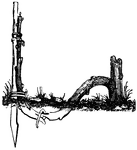
Layering Method of Plant Propagation
Layering is a method of plant propagation by which a part of the plant is bent down and covered with…

Types of Simple Leaves
This illustration shows 4 types of simple leaves: 1. Linear (an elongated version of the elliptical);…
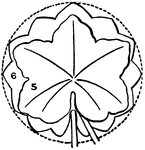
Types of Simple Leaves Derived from the Circular Type
This illustration shows two types of leaves derived from the circular type: 5. Palmately lobed; 6. Orbicular…
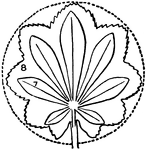
Compound Leaves Derived from the Circular Type
This illustration shows two types of compound leaves derived from the circular type: 7. palmately compound;…

Leaves Derived from the Oval Type
This illustration shows leaves derived from the oval type: 13. Ovate and Serrate; 14. Palmately three…
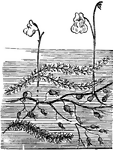
Bladderwort
This illustration shows a Bladderwort, some of whose leaves have converted into traps for insects.
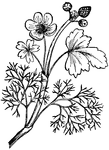
Water Crowfoot
This illustration shows a water crowfoot, with broad, floating leaves, and much-cut, submerged leaves.

The Lentil Plant
This illustration shows a lentil plant. Lentils are the round, flat seeds of a small leguminous plant…
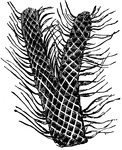
Portion of Lepidodendron
This illustration shows a portion of Lepidodendron. Lepidodendron is the generic name of a large and…

Cabbage Lettuce
Cabbage Lettuce is distinguished by its broad leaves and low spreading habit. It is an annual plant,…
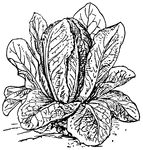
Cos Lettuce
Cos Lettuce, or Romaine Lettuce, is distinguished by its upright habit, and the oblong form of its leaves.

Spike'nard
"A highly perfumed ointment prepared from a plant in india growing in short spikes." Pictured is the…

Steam Engine
Cross-section of a steam engine plant with Alberger barometric condenser and cooling tower.
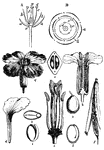
Structure of a Flower
Flower anatomy. A, sectional view of a flower showing the vertical disposition of whorls. a, sepal of…

Phytocoris
A genus of plant bugs, having the beak extending to the middle of the abdomen and the sides of the head…

Pine Sap
1, Flowering plant of the pine sap (Hypopitys multiflora); 2, plant with fruits. a, a, flower; b, fruit.
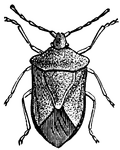
Plant-bug
Dotted leg plant-bug, one of many different heteropterous insects which suck the juices of plants.
